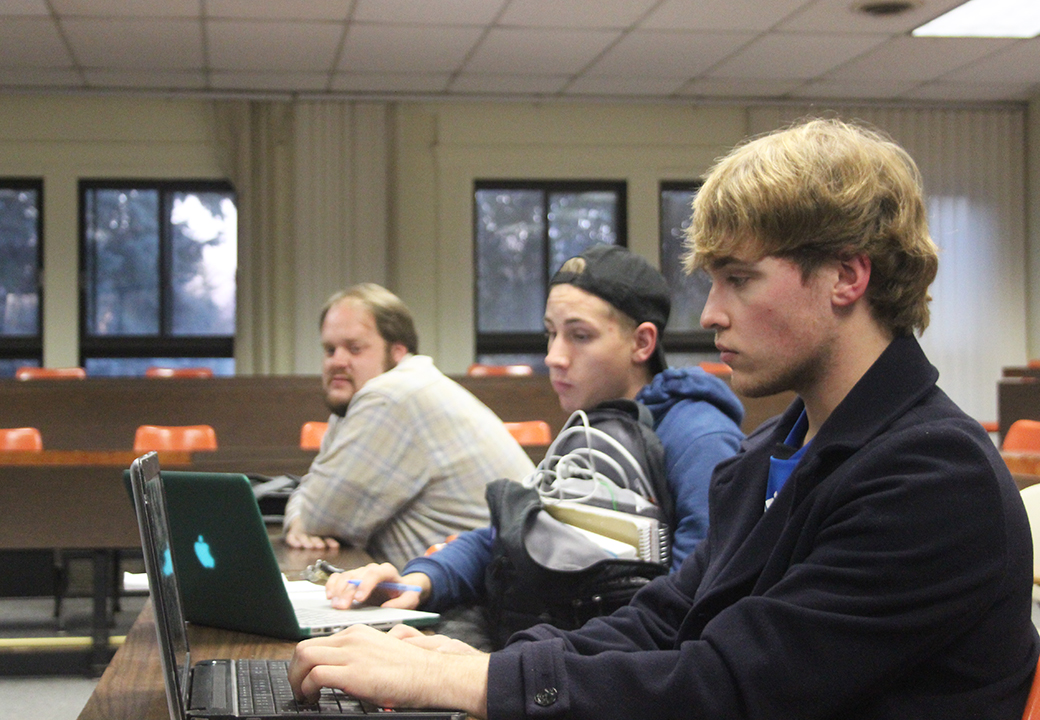
Anthropology club provides ‘relative view of culture’
Several students, like fifth-year senior Alec Anton, are learning anthropology is much more than just archaeology.
Having been in the club for two years, he and about 25 other active members in the Anthropology Program Enthusiasts Society (APES) are exploring different discoveries the field has uncovered throughout the years.
“You can learn a lot about where people are really coming from as far as their past is concerned,” Anton said.
APES at the University of South Dakota is made up of several anthropology majors, but the group welcomes all majors, said graduate student Aaron Mayer.
“We build interest in anthropology and archaeology for students,” Mayer said. “It’s a good way to get to know your fellow students.”
Jesse Van Maanen, senior and president of APES, said the group discusses current events, anthropology classes and interesting anthropology and archaeology articles during their weekly meetings every Thursday at 5 p.m. on the first floor of East Hall.
APES has gone on trips to make education exciting, said Matthew Sayre, APES adviser and anthropology assistant professor.
The trips this semester have included attending a lecture in Omaha, Neb., to learn about Greek art, visiting the site of a stone effigy — a Native American artwork — near Yankton and collecting native plants with biology graduate students at Spirit Mound. APES recently took a trip to Sergeant Floyd River Museum in Sioux City Nov. 11.
The club’s main event of the year will happen next semester in February.
“Our big fundraiser for the year is our Valentine’s Day fundraiser. We do the bananagrams,” Van Maanen said. “It supports our club for the year. It helps with traveling and different expenses associated with the events that we go to.”
APES also travels together a couple of times a semester to visit archaeology digs and attend conferences about various anthropology topics, and takes longer trips to places such as Peru to visit archaeology digs, Van Maanen said.
Anton was able to travel to Peru for a month with other USD anthropology students to visit archaeological digs.
“It gave me a more relative view of culture,” Anton said. “It broadened my mind.”
Anton said it was interesting to interact with people who had seemingly different lives than his own in the U.S., but it was also strange to see the parallels between the two countries.
Anton said while in Peru he went trout fishing with a friend from work, and when they went back to his place to clean the fish, Anton noticed his friend’s wife was watching ‘American Idol’ in their mud hut on TV.
“There are a lot of similarities,” Anton said. “At times I felt like I was on a different planet, but then there were moments where I felt like I was at my neighbor’s house.”
For Van Maanen, Anton and Mayer, APES has supported their interest in anthropology, connected them to the department and provided opportunities to learn more about the field of study.
“Anthropology is everything that we do every day, all the time,” Van Maanen said. “Anything that involves people is anthropology, so it would pertain to absolutely anybody.”
(Photo: First-year Brody Woehl, junior Zach Nelson and graduate student Aaron Mayer search on the Internet for a possible location for an Anthropology Program Enthusiasts Society trip Nov. 6 in East Hall. APES has about 25 active members from multiple majors who meet to learn more about anthropology and archaeology. Malachi Petersen / The Volante)

